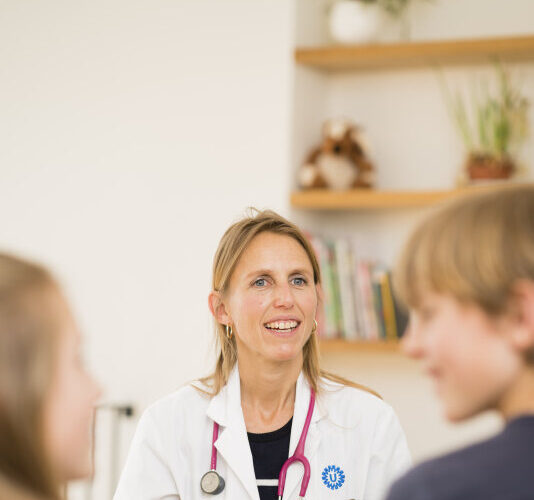Pediatrician of metabolic diseases and researcher Sabine Fuchs has been awarded an ERC Starting grant of €1.5 million for five years. She plans to use the prestigious grant to improve the treatment of rare genetic diseases.
As a pediatrician of metabolic diseases, Fuchs sees many children with metabolic diseases, or rare genetic disorders. These disorders, also called metabolic diseases, are the result of a errors in the DNA. Such an error or mutation can cause a wide variety of symptoms. It is increasingly easy to find these errors, and thus to obtain a diagnosis. But treatment is lagging behind,’ says Fuchs. I want to do something about that. To achieve this I have a plan that consists of three steps.
Step 1. Correcting the mutation in the DNA (‘gene editing’).
Fuchs: ‘I want to make gene correction effective enough to treat a patient, safe enough to apply, and versatile enough to cure many different genetic diseases. The technology Fuchs plans to use for this purpose is “Prime editing,” a new form of gene therapy based on the widely used CRISPR-Cas system.
Step 2. Getting the gene correction treatment to a patient’s liver.
Gene correction, such as the technique based on CRISPR-Cas, uses molecular “scissors” that can cut DNA at precisely the desired location and make very specific changes to the DNA. The treatment involves inserting the instructions for producing the scissors into the body, so that the cells start making the scissors themselves, thereby repairing their own DNA. The instructions are made of mRNA, a molecule derived from DNA that can only exist in a cell temporarily. The production of the scissors is therefore temporary (a few days), while the DNA correction is permanent.
Fuchs wants to pack the required scissors into tiny droplets of fat that will travel to the liver via the patient’s blood. This is because the liver is the most important metabolic organ and therefore plays a crucial role in metabolic diseases. If the therapy can restore 1-5% of liver cells that may be enough to removea patient’s symptoms.
Step 3. Optimizing the treatment for each patient.
Since every patient and DNA mutation is different, the molecular scissors must be adapted for every individual patient in order to get the best results. Fuchs wants to use organoids for this purpose. These are small clumps of cells taken from the patients hemselves which, after treatment in the laboratory, mimic a particular organ – in this case the liver. Many liver organoids can be made using only a small amount of tissue from the patient. With these organoids, researchers can tailor the treatment to each individual patient.
‘This is a big project that we are going to be fully engaged in over the next few years. Thanks to this grant, I hope that we can start offering this large group of patients with diverse genetic diseases a real treatment,” says Fuchs.
Sabine Fuchs works closely with Metakids (in Dutch), the foundation that raises money for research into metabolic diseases, and was also on the program ‘Time for Max’ to talk about this issue.
Watch the episode (in Dutch)>
